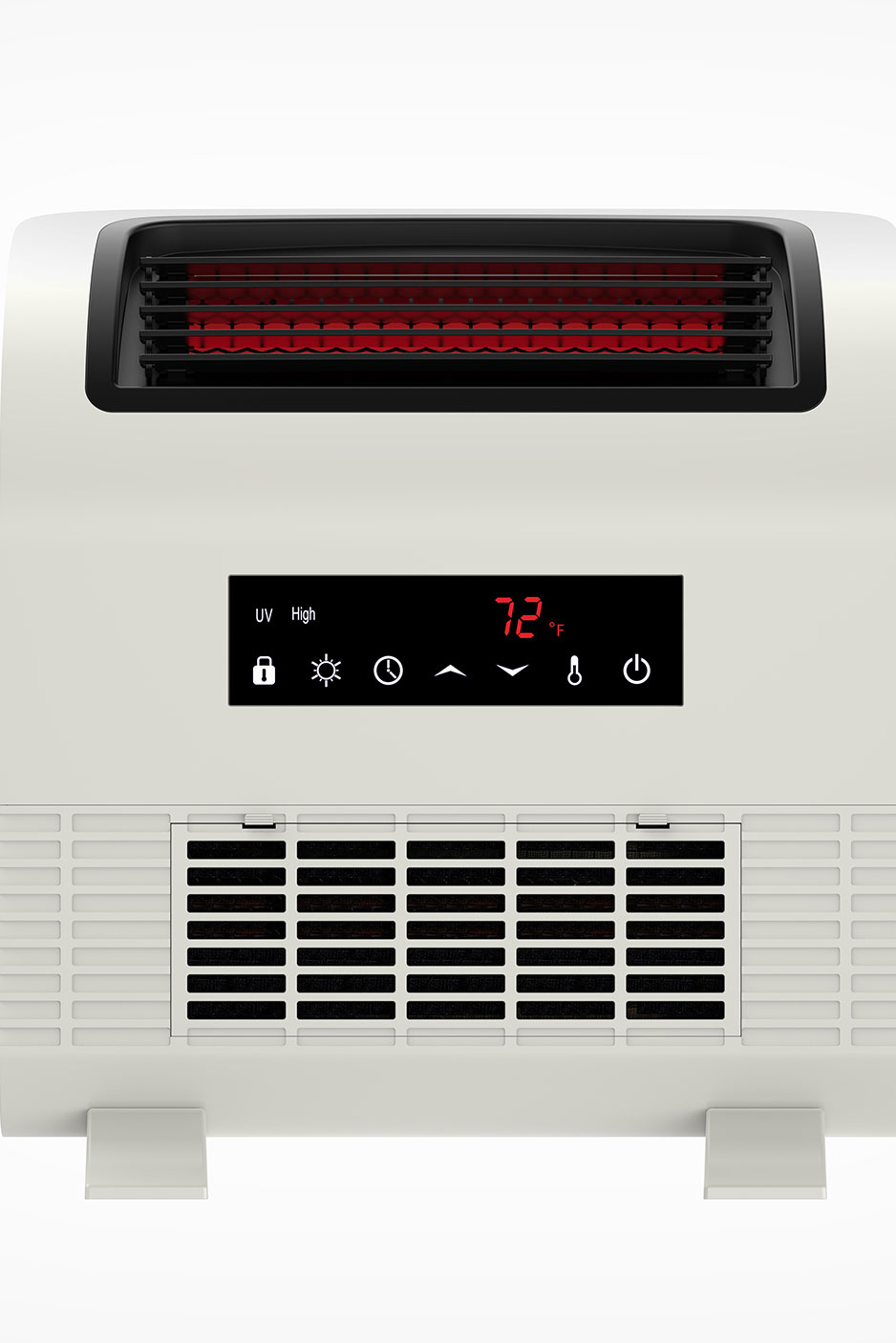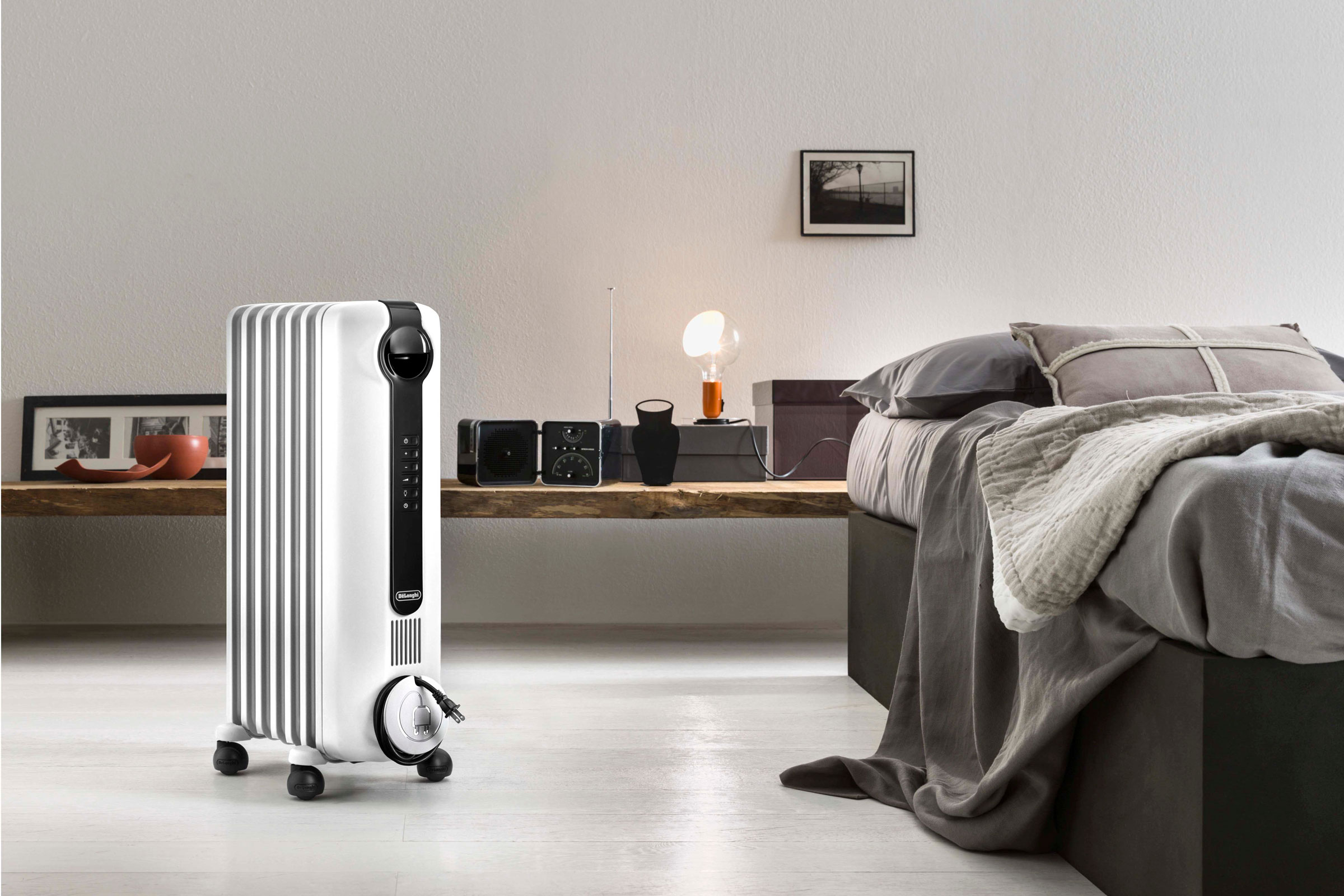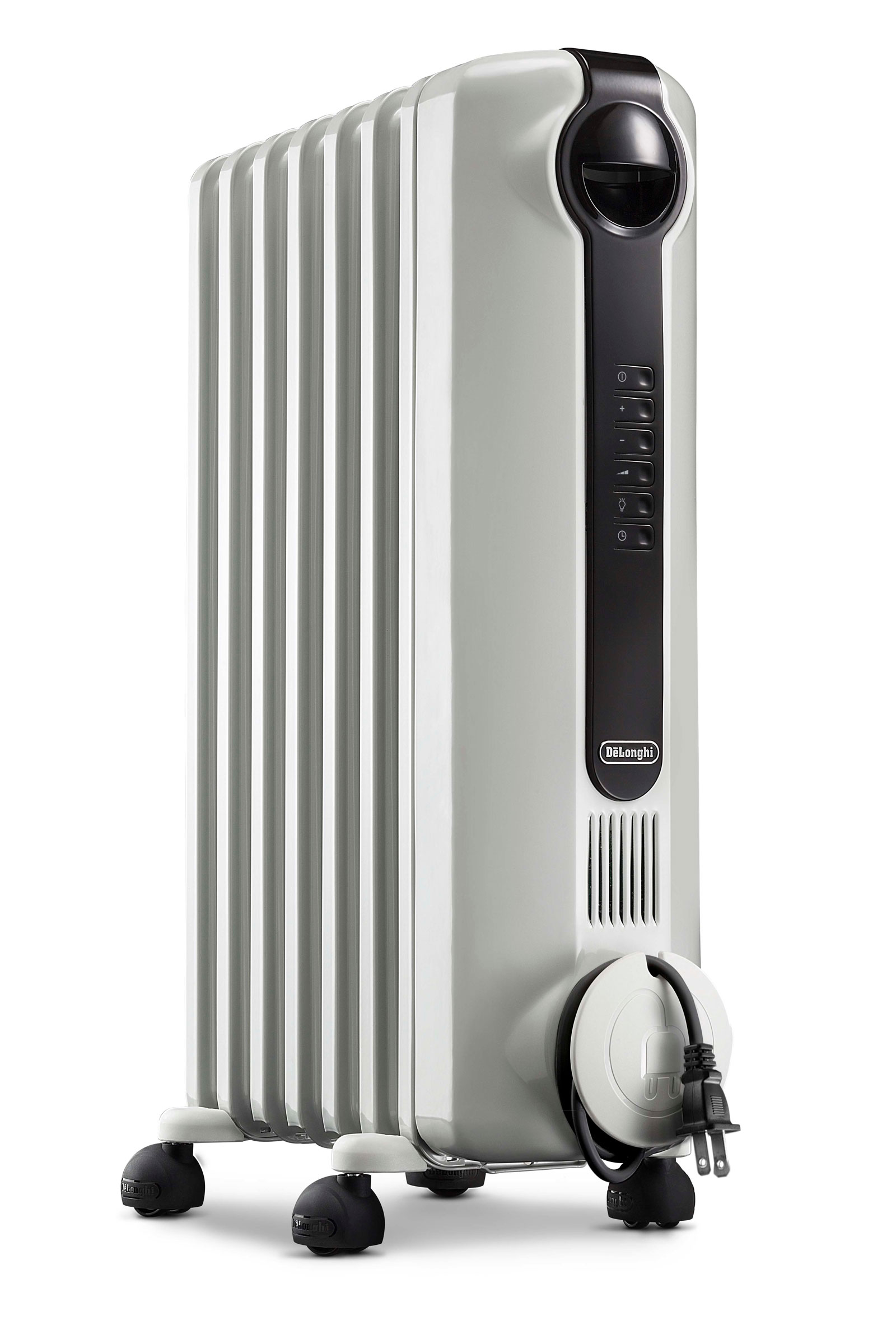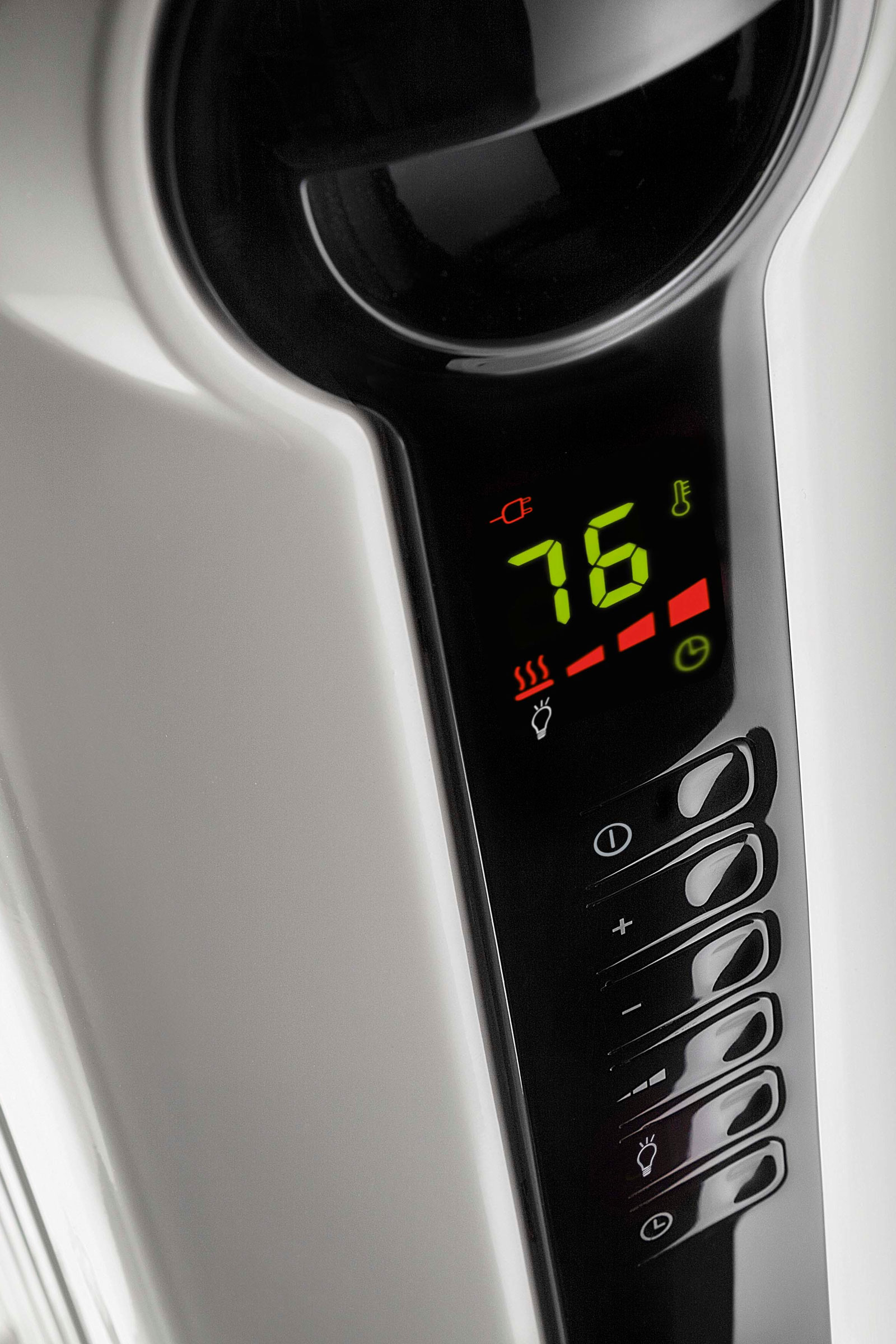Story at a glance:
- Almost all of the electricity used by space heaters is converted into heat, making them incredibly energy-efficient devices.
- Turning your central heating system down and using a space heater for zone heating is considerably more efficient than heating your entire home at once.
- To maximize a space heater’s effectiveness, take steps to weatherize your home and ensure air is not leaking in or out.
Staying warm throughout the winter is as important for safety as it is for comfort, but with heating prices on the rise many places, monthly utility bills can become burdensome. Central heating or radiant heating can be ideal options for heating an entire house or building, but heating rooms that aren’t even occupied can be a serious waste of energy.
It is for this reason that many people turn to electric space heaters for their heating needs. But are space heaters energy-efficient?
Here we explore the various types of space heaters, the ins and outs of space heater efficiency, and a few ways to improve their energy efficiency further.
What is a Space Heater?
From a purely technological standpoint space heaters are classified as portable appliances used to heat a single, small-to-medium-sized space. Space heaters warm a space through one of two methods: convection or radiant heating. Convection-based space heaters work by circulating heated air throughout a room—typically by way of a fan—and are considered to be more effective at evenly heating a space.
Radiant space heaters, on the other hand, emit infrared radiation that heats people and objects directly within their line of sight—a characteristic that can be ideal when occupying a room for shorter periods of time.
Types of Electric Space Heaters
- This DeLonghi Indoor electric space heater with thermostat is available at Lowe’s and goes up to 1500 watts with convection and radiant tower. Photo courtesy of Lowe’s
- Photo courtesy of Lowe’s
Generally speaking there are two main categories that space heaters fall into: combustion or electric. Combustion space heaters produce heat through the process of combustion—that is, by burning an external fuel source such as wood, propane, or oil.
Electric space heaters, on the other hand, rely on electricity to generate heat rather than combustion and do not produce an open flame. Because this article deals primarily with the energy efficiency aspect of space heaters, we will only be focusing on the electric variety. There are four distinct types of electric space heaters: fan heaters, ceramic, oil-filled, and infrared.
Fan Heaters
Sometimes referred to as blow heaters, fan heaters work by using a fan to pass air over an electric heating element—typically a coiled resistance wire—and out into a room. The fan itself requires very little electricity to run and what electricity it does use is then converted into additional heat, resulting in zero loss of efficiency.
Most modern fan heaters offer some degree of control over the power output and feature different power settings. Some higher-end fan heaters even boast thermostatic controls and will switch off once the room warms to the desired ambient temperature.
Space heaters that use a fan to circulate warm air can heat a room faster than those that do not use fans, though they also make more noise than any other type of space heater. Due to their relatively simple construction fan heaters are typically the least expensive option when it comes to space heaters.
Ceramic

The DeLonghi ceramic compact personal iIndoor electric space heater with thermostat (up to 1500 watts) is available at Lowe’s. Photo courtesy of Lowe’s
While technically a sub-variety of fan heaters, ceramic space heaters generate heat using a ceramic heating element with a positive temperature coefficient (PTC) instead of a metal resistance wire. The PTC ceramic material is semi-conductive and makes contact with aluminum fins, which then heat up; a fan is then used to blow air across the fins and warm the surrounding air.
Like fan heaters, ceramic space heaters come up to temperature quickly. And because ceramic holds heat well, they still give off heat for a short period of time after the unit is shut off.
Oil-Filled
Oil-filled space heaters are similar in both appearance and operation to a conventional radiator. As the name suggests, this type of space heater is filled with diathermic oil and uses an internal heating element to warm said oil; the warmed oil then transfers heat to the unit’s external metal wall by way of convection, through the wall via conduction, and finally into the surrounding air via convection and thermal radiation.
Because diathermic oil has an extremely high, specific heat capacity it is able to absorb and store a large amount of heat before gradually releasing it over time to evenly warm a room. Diathermic oil is so good at absorbing heat that an oil-filled space heater will continue to radiate heat long after the unit itself has been switched off.
Like other types of electric space heaters, oil-filled heaters are highly efficient in that they convert more than 99% of the electricity they use into thermal heat energy. One of the only downsides to oil-filled space heaters is that they can be quite heavy, though they are still considered portable.
Infrared

Closeup of the Utilitech infrared cabinet indoor electric space heater with thermostat and remote, available at Lowe’s and up to 1500 watts. Photo courtesy of Lowe’s
As the most technologically advanced variety of space heater, infrared heaters contain a high-temperature emitter that transfers energy from one object to a cooler object by way of either short-, medium-, or long-wave infrared radiation. Modern infrared heaters typically offer the most control of any electric space heater, with many units possessing energy-saving settings and touch-screen controls.
Infrared space heaters are typically capable of radiating approximately 86% of their electrical input energy as radiant energy; this input energy is converted into radiant energy in the unit’s filament and then directed onto the desired target by way of reflectors.
There are multiple types of infrared space heaters, but the most common use quartz-glass-encased tungsten heating elements, which emit medium-wave infrared radiation and provide heat very quickly. Most quartz infrared space heaters use highly polished reflectors to direct radiation in a very concentrated, uniform pattern.
Are Electric Space Heaters Energy-Efficient?
Despite evaluating a number of models, the US DOE has not granted any space heater on the market its coveted ENERGY STAR label. Still, considering space heaters convert almost 100% of the electricity they consume into heat, they are considered to be efficient with regard to the actual energy they use.
The most efficient space heaters are those featuring thermostatic controls, as these help prevent overheating a room and wasting energy. Convection-type space heaters are incredibly efficient at heating an entire room evenly, whereas radiant space heaters are much more effective at providing heat to those people and objects within their direct line of sight.
Do Space Heaters Save Money?
If space heaters are efficient devices, it stands to reason they’d also help save money—and while this is generally a sound line of thinking, it hinges on one crucial detail. Space heaters will only help you reduce your household’s heating bills if you turn your home’s central heating unit down or off when the heater is being used. By turning your central heating system down and using a space heater to only provide heat to the room you’re in—a practice commonly referred to as zone heating—you’ll start saving money on heating each month.
How much you save will largely depend on how often you use the space heater and the type of central heating system you have. On average it costs roughly $0.20 per hour to run the average space heater, according to data gathered by CNET. This is cheaper than using natural gas, electricity, propane, or heating oil to heat your home, as shown below:
- Natural gas—$0.25 per hour
- Electricity—$0.34 per hour
- Propane—$0.50 per hour
- Heating oil—$0.60 per hour
How to Improve Space Heater Efficiency
Improving the efficiency of your space heater is really about improving the weatherization of your home as a whole. If your home is drafty and air leaks in or out, a percentage of the heat energy produced by your space heater will be wasted, reducing its overall energy efficiency.
To prevent this from happening, consider doing the following:
Seal Air Leaks
Air leaks account for approximately 25 to 40% of the energy used to cool and heat a home according to the experts at ENERGY STAR. Taking care to verify that all seals, caulking, and weather-stripping around doors, windows, and other potential openings are airtight—and fixing those that aren’t—will drastically minimize the amount of heat lost during the winter months.
Upgrade Your Insulation
While one of the more expensive solutions, upgrading your home’s insulation can drastically increase the amount of heat retained from an electric space heater, allowing you to fully capitalize on its warming capabilities. Most homes feature fiberglass wall insulation in either batts or rolls—and while fiberglass has a high R-value, additional insulation is sometimes needed.
Two of the easiest ways to add insulation to an existing wall are to use either loose-fill/blown-in cellulose/mineral wool insulation or foam polyurethane/phenolic insulation.
Install Energy-Efficient Windows
Approximately 30% of a home’s heating energy is lost through its windows according to the DOE—and while some of this may be due to improper weather-stripping, sealing, or installation, a large portion of that heat energy is lost through the glass and frame itself.
If you don’t want the heat from your space heater to quite literally go out the window, you might consider installing new, energy-efficient windows. Energy-efficient windows typically feature double- or triple-paned glass that contains inert argon gas between each pane as an added layer of insulation.
To prevent heat from escaping through the window frame, choose materials like fiberglass that have low-conductivity and a high resistance to thermal heat transfer.
Benefits of Space Heaters
Predictably the main benefit of space heaters is their ability to provide direct, localized heat, either to a room or an individual. Other benefits of using a space heater include:
Energy Efficiency
As we’ve already determined, electric space heaters used in properly weatherized homes are considered to be energy-efficient appliances, if only for the fact that virtually all of the electricity they consume is converted into heat; only a minute percentage is used to power the electrical components.
Cost Effectiveness
As long as they are used correctly space heaters can be a very cost effective way to heat your home during winter. Even if they are just used to provide supplementary heat to an individual or a particularly chilly room, space heaters can still help save money by bypassing the need to turn the central heating unit up just for one person or one room.
Depending on the type of central heating unit already installed in your home (electric, natural gas, oil, etc.), using a space heater for zone heating can help you save an average of anywhere from $72 to $506 between October and March.
Disadvantages of Space Heaters
Despite being a cost-effective and energy-efficient means of heating a room, space heaters are not without their disadvantages.
Limited Range
In order to comply with government regulations, space heaters cannot legally exceed a 1,500-watt output—which is simply not enough to feasibly heat an entire home. As a general rule it takes roughly 10 watts of electricity to heat one square foot of space, meaning a space heater operating at max output is only capable of effectively heating a room that is no larger than 150 square feet.
Then again, space heaters are not designed to be replacements for a central HVAC system. Their limited range is an intentional design feature.
Fire & Burn Hazard
It’s estimated that more than 1,700 residential fires each year are associated with the use of space heaters, resulting in 80 deaths and approximately 160 injuries nationwide, according to the US Consumer Product Safety Commission.
This is especially true of combustion space heaters, but even electric space heaters still pose a burn and fire hazard. It’s always recommended to carefully read the safety instructions that come with your space heater to avoid these potential dangers.
A few general safety rules are as follows:
- Never touch the face of the space heater while it is in use.
- Do not cover or block the heater while it is on (a good rule of thumb is to keep it at least three feet away from anything flammable).
- Plug the heater directly into an outlet rather than a surge protector.
- Never leave a space heater on and unattended—especially while there is no one home or while sleeping.
- Carefully monitor children and pets while the heater is in use.
- Make sure your home is equipped with working smoke and carbon monoxide alarms.
Following these guidelines and any others that come with the unit will greatly reduce the risk of fires and accidental injury.
What to Look for When Buying an Electric Space Heater
When considering purchasing an electric space heater, it’s recommended that you look for the following features to ensure that the model you buy is both safe and efficient:
- Certification. While ENERGY STAR does not certify space heaters, there are other groups that do; units that bear UL certification, for example, have been independently tested by UL Solutions and meet both their safety and quality standards.
- Thermostat. Space heaters that use a thermostat to monitor indoor temperatures can help prevent overheating a space by automatically shutting off once the desired temperature is met.
- Multiple settings. The best space heaters come with at least two to three temperature/power settings, giving you more control over the unit’s heat output; this too can help prevent wasting energy as a result of overheating a room.
- Tip-over switch. Space heaters with a built-in tip-over switch will automatically shut off once the unit is no longer in an upright position.
- Cool-touch housing. In order to decrease the risk of potential burns, look for a space heater with cool-touch housing.
- Automatic shut-off. Space heaters that possess an automatic shut-off will power themselves down should the unit overheat; this greatly reduces the risk of accidental fires.
It’s also a good idea to check the wattage capacity of the space heaters you’re considering to ensure that the unit will be able to adequately heat the rooms you spend the most time in.
Space Heater FAQs
How energy-efficient are electric space heaters?
Because they convert almost 100% of the electricity they use into heat, electric space heaters are considered to be highly-efficient appliances. In order to make the most effective use of that heat and avoid wasting it, however, it’s recommended that you seal any air leaks in your home, replace faulty weather-stripping, and re-caulk drafty windows.
Are space heaters more efficient than central heating?
While it’s not exactly a 1-to-1 comparison as space heaters and central heating units fundamentally possess different functions (heating a small space vs heating an entire home), using a space heater to warm only the room you’re currently occupying is considerably more efficient than running your central heating system to warm every room at once, even unoccupied ones.
How much do space heaters cost?
Electric space heaters can vary greatly in purchasing price due to a variety of factors, namely its overall heating capacity. Small tabletop and personal heaters can be bought for as low as $20, whereas larger, full-room space heaters can range closer to $300.






